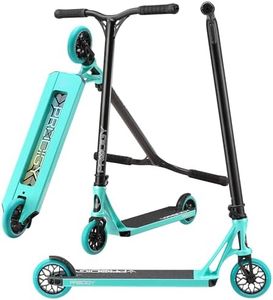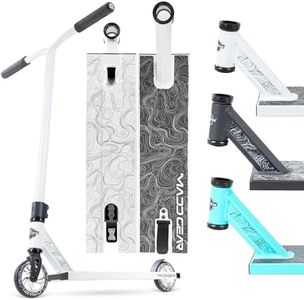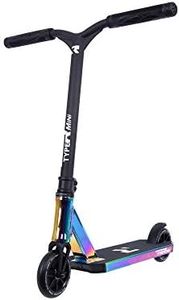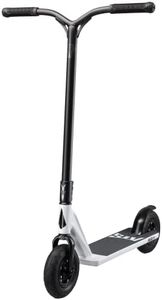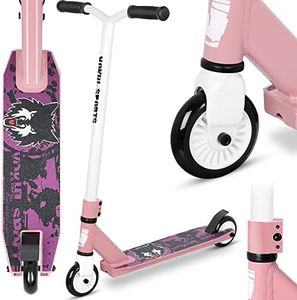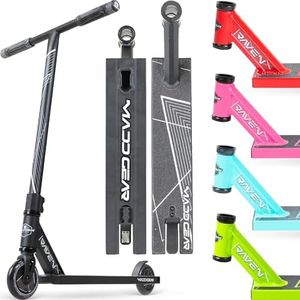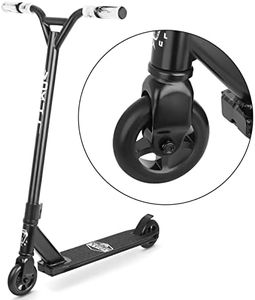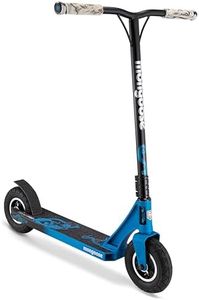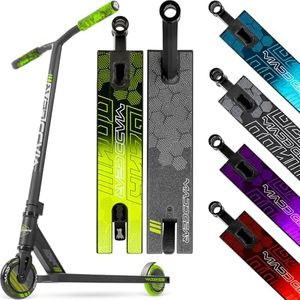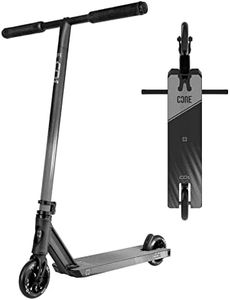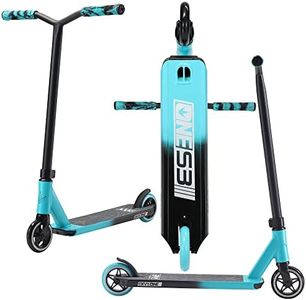We Use CookiesWe use cookies to enhance the security, performance,
functionality and for analytical and promotional activities. By continuing to browse this site you
are agreeing to our privacy policy
10 Best Pro Scooters
From leading brands and best sellers available on the web.Buying Guide for the Best Pro Scooters
Choosing the right pro-scooter is all about matching the scooter's features to your riding style, experience level, and where you plan to ride. Before you start, think about whether you'll use it mostly for tricks at the skate park, commuting, or both. Pay attention to build quality, weight, and comfort, as these will affect how much control you have and how long your scooter will last. Each part of the scooter—from the deck to the wheels—plays a role in performance and should fit your needs and skill level for the best experience.Deck Size and MaterialThe deck is where you stand, and its size and material matter for your riding style. A wider, longer deck gives you more room and stability, making it good for street tricks and bigger riders, while a shorter, narrower deck is lighter and better for technical stunts. Most decks are made from aluminum for a balance of lightness and strength. If you're just starting or like more space, go for a larger deck; if you want to focus on fast spins and flips, a smaller deck might be easier to handle.
Bar Height and WidthHandlebars come in different heights and widths, and they affect comfort and control. Taller bars suit taller riders and can make it easier to perform certain tricks, while shorter bars are lighter and ideal for quick, technical moves. Width often matches shoulder width, providing stability. When choosing bar size, stand on the deck—handles should reach roughly waist height and feel comfortable to grip. If you’re unsure, look for something adjustable or ask to try different sizes in person.
Compression SystemThe compression system keeps your bars and fork securely connected, important for durability and smooth trick performance. Common types include threaded, IHC, HIC, and SCS. SCS and HIC are typically stronger and favored by advanced riders because they need less maintenance and hold up well under tough tricks. If you’re new, any reliable system will do, but as you progress, look for stronger systems that match your trick level.
Wheel Size and HardnessWheels impact speed, stability, and how easily you can land tricks. Pro-scooter wheels are usually between 100mm and 120mm in diameter. Bigger wheels roll faster and are better for commuting or smooth parks, while smaller ones are more agile for tricks. Harder wheels (measured in durometer) last longer and slide more easily, while softer ones grip better but may wear faster. Pick wheel size and hardness depending on whether you value speed and smoothness or want nimble control for stunts.
WeightWeight is essential because it affects how easy the scooter is to carry and handle, especially during tricks. Lighter scooters are great for advanced riders who do a lot of flips and spins, while heavier models can feel more stable and are suitable for cruising or for beginners learning balance. Think about whether you’ll be carrying your scooter around or focusing on heavy trick riding to guide your choice.
Brake TypeBrakes help control your speed and are usually located on the rear wheel. Pro scooters have either flex fender (a piece of metal that presses on the wheel) or spring brakes. Flex fender brakes are quieter and more reliable for trick riding, while spring brakes are easier to replace but can rattle. If you’re doing lots of tricks, go for a flex fender; if you want easy maintenance and don’t mind some noise, a spring brake works fine.
